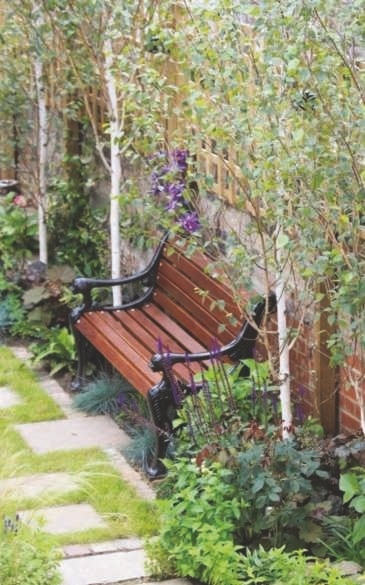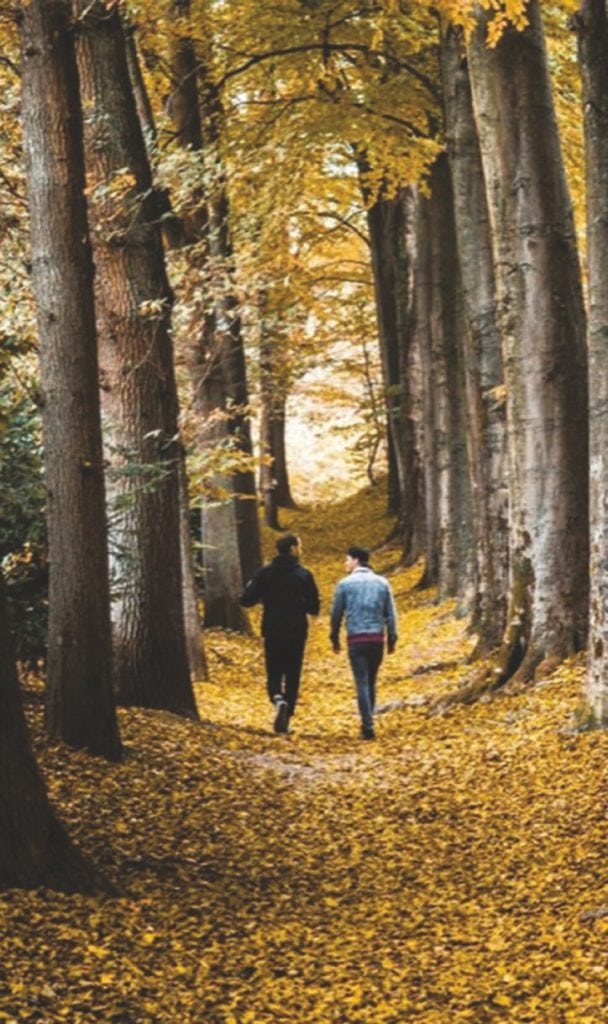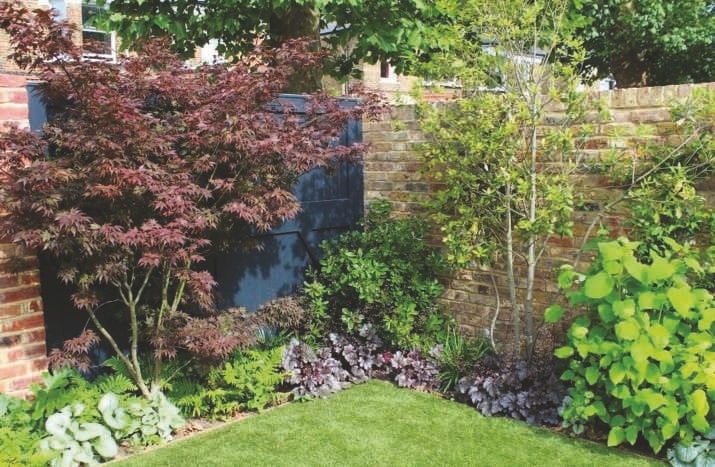We Need More Trees for the Future!
Trees change lives. They provide food, forage and habitat for animals and help combat climate change, so let’s get planting!

We can easily overlook the trees gracing our landscapes, especially when we live in towns and cities where there are fewer of these majestic beauties to take notice of. But trees are so important to our world and ourselves that taking a moment to consider them may very well save our future.
As well as being super pollution destroyers, trees help with our mental and physical health. The carbon dioxide that trees consume helps to counteract the huge amounts being produced by burning fossil fuels and, through transpiration, trees actually cool the air around them. Research has shown that through the release of chemicals known as phytoncides from trees, people’s blood pressure, anxiety and pain can all be reduced. No wonder a walk in the woods has such a soothing effect.
Trees are excellent at combatting all kinds of problems, from curbing flooding to providing shade, warmth, shelter from wind and extreme weather, producing raw materials and biodiverse habitats. With carbon dioxide now at dangerously high levels, trees, especially ancient forests, are essential to keep the levels in check, and in turn, keep us alive.
Earlier this year it was announced that between March 2019 and June 2020, 1,420 hectares (3,507 acres) of new woodland were planted in England. This falls well short of the 5,000-hectare target set by government in 2019. They had aimed to add 10 million new trees to rural landscapes and provide an additional £10m for urban areas to plant 130,000 by 2022, but with the first of these planting targets missed, this now looks unlikely. With dangerous emission levels rising and ancient trees declining we need to plant more trees now in order to preserve the planet for future generations.
The Garden Creative has teamed up with 9 Trees CIC (www.9trees.org) (email: info@9trees.org), a tree planting organisation with a difference, to offer our clients an incentive to plant trees in their own gardens while supporting tree planting around the UK.
It takes nine trees to ‘balance’ the average UK citizen’s carbon consumption each year.
9 Trees plant trees in new woodlands across England and Wales, then employ local people to conserve and manage the woodlands as they grow. Supporting 9 Trees means that they can plant trees to counteract carbon emissions while educating, creating employment and promoting biodiversity in each area. Because the land is provided by landowners, 9 Trees work differently to other tree planting schemes. They cover the cost of the trees and their protection including pre- and post-management of the woodland to ensure its longevity, working with the local community to create an immediate impact.
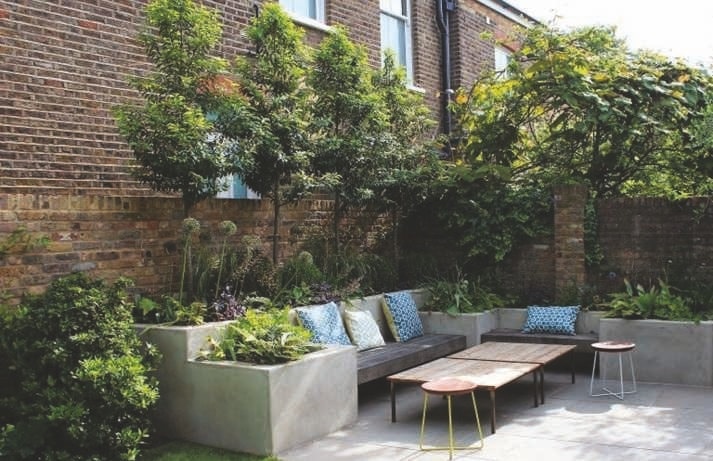
The Garden Creative is supporting them by offering as a service to all its clients that for each tree they plant in your garden 9 Trees will plant one in a woodland in the UK. We would love to have a local site where we could plant trees as currently there are no sites in Kent, so if you have land that you would be interested in turning into woodland, 9 Trees would love to hear from you. They work in partnership with landowners, community groups, local councils and festival sites. If you would like to find out more, have land to offer, or simply share 9 Trees’ ethos for the benefits that trees can bring to the local environment as well as in the fight against climate change, email info@9trees.org.
To discuss planting a tree in your own garden you can get in touch with Sarah at The Garden Creative to arrange a free consultation. The Garden Creative is available for small-scale planting plans through to full garden design and landscaping and will work with you to create a unique garden suited to your family’s needs. Incorporating trees in the garden can create shelter from strong, drying winds, shade from harsh sun, be a natural aid to waterlogged soils, encourage wildlife to the garden and provide a beautiful focal point.
Email: sarah@thegardencreative.com or go to www.thegardencreative.com
How to Plant a Tree
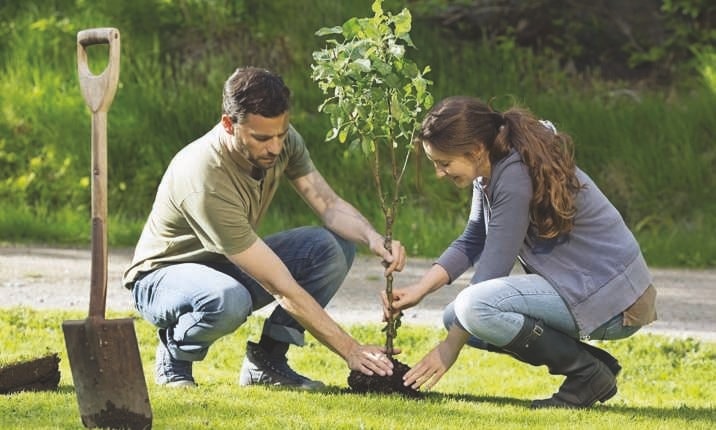
Right plant, right place
The most important thing when selecting a tree is to choose one that will thrive in the area you are planting it in. Willows will be effective in waterlogged ground, Alder and Pine make excellent windbreaks and many ornamental trees require a sheltered location. The longevity of the tree will depend on its suitability to the site.
When to plant
Evergreen trees are best planted in the autumn or Spring and deciduous trees are planted during the winter when they are dormant.
Digging a hole
The hole for your tree should be one to two times wider than the pot but only ever as deep as the top of the soil in the pot. Planting trees too deeply is one of the main reasons for trees not surviving. You can dig a square hole which is meant to encourage the roots outwards.
Some friendly fungi
Trees don’t require fertiliser when planting, but Mycorrhizal fungi really helps root growth and ability to access water and nutrients. Naturally present in most soils adding this friendly fungi in the form of powder or granules when planting will ensure the best start for your tree.
To stake or not to stake
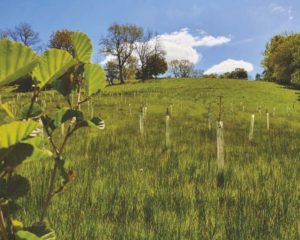
Small trees in sheltered gardens will not need staking. It’s better to allow movement so that the tree grows a strong root system. In more exposed locations or when planting large trees, its best to speak to an expert who can advise on the best form of staking to use. It’s generally best to stake low down on the trunk and to remove the stake after 18 months to three years.
Water, water water!
Watering is the most important job with newly planted trees. During spring, summer and autumn a watering can full several times a week should be right for most. If you are not going to be around regularly, it is worth fitting a seep hose on a timer to water for around an hour every few days for the first year. Once the tree is established it won’t need extra watering except maybe in very hot, dry spells.
Amazing tree facts
- The UK’s oldest reported tree is The Fortingall Yew in Perthshire, Scotland. It is estimated to be over 3,000 years old!
- There are almost 1,000 ancient Oak trees in Sherwood Forest, Northern Europe’s largest wood of ancient trees many are up to 1,000 years old!
- The UK’s largest annual tree celebration, National Tree Week runs from Nov 28th to 6th December this year check out treecouncil.org.uk to see how you could get involved
- Adding just one tree to an open pasture has been found to increase its bird biodiversity from almost zero to as high as 80 different species.
- A 2015 Unilever survey found that only 1% of families could identify Britain’s most common trees. The Woodland Trust has a free Tree ID app to download, so no excuses!
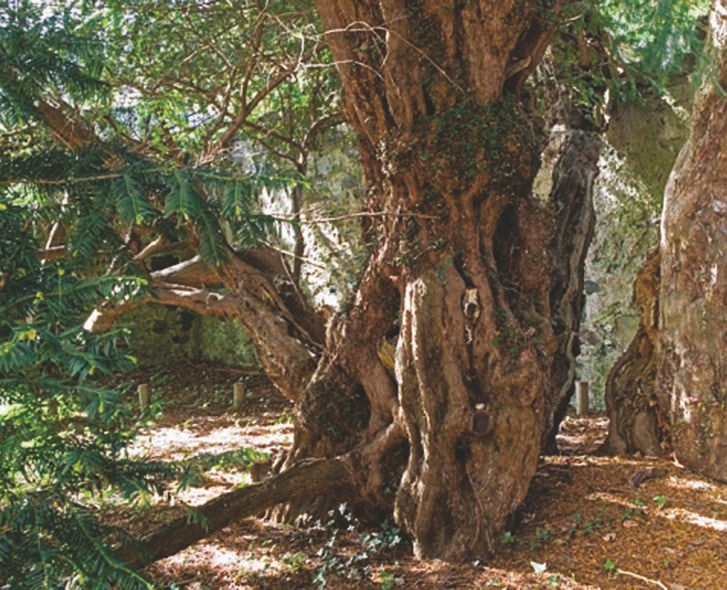
The Fortingall Yew in Perthshire 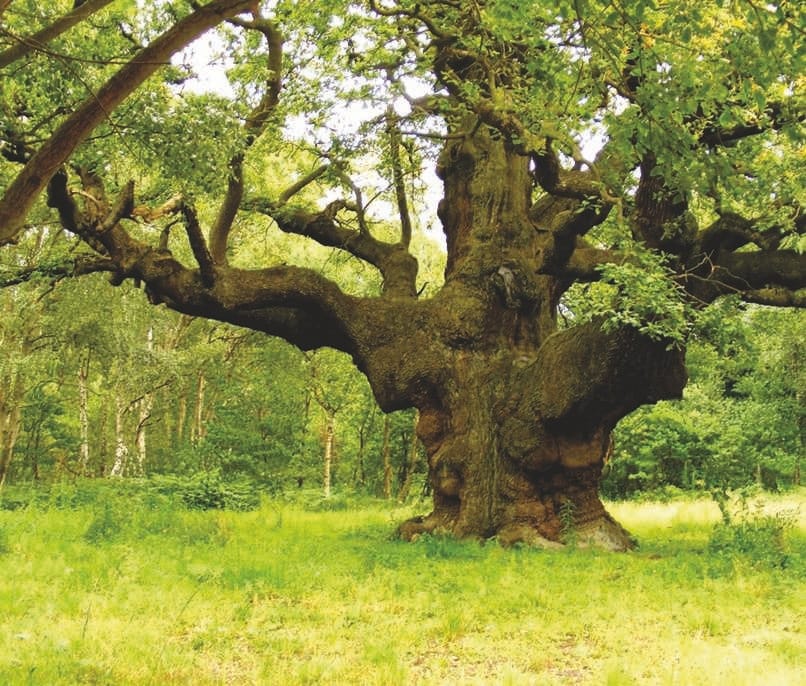
An ancient oak tree in Sherwood Forest
Feature Trees for Your Garden
Amalanchier Ballerina
A small tree that packs a punch! Snowy white delicate blossom in spring, great for the bees, and beautiful autumn colour. Perfect for any situation, it’s a great all-rounder.
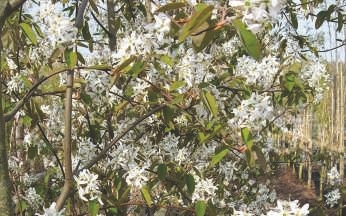
Cercis Canadencis ‘Forest Pansy’
With dark maroon leaves, the Cercis provides an excellent backdrop for white or purple flowers. It’s a dramatic tree with bright cerise blossom on bare branches before leaves open in spring. Fiery shades of red adorn the leaves before falling in autumn. Plant as a specimen tree and keep watered as it will dislike drought until established.
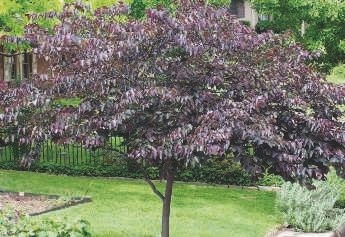
Acer Palmatum ‘Sango-kaku’
Japanese Acers are available in many colours and habits but this is a truly striking tree. With bright coral pink stems the leaves turn from soft pinkish green to bright canary yellow in autumn. Acers need a sheltered spot away from strong winds and afternoon sun and like to be kept fairly moist and cool at the roots. They are perfect for pots.
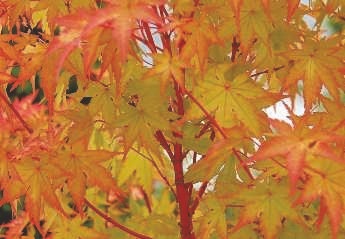
Crataegus Laevigata Pauls Scarlet
Wonderful if you live on the coast as it’s very tolerant of salt laden winds. A member of the Hawthorn family it blossoms later than many other spring trees, displaying deep pink-red flowers in May and is invaluable to wildlife. A great choice of tree for an exposed spot on most soils.
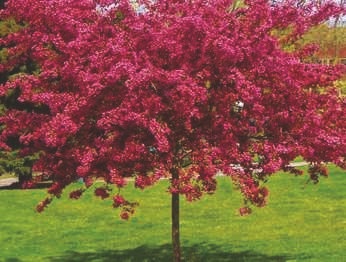
Posted in: Gardens
